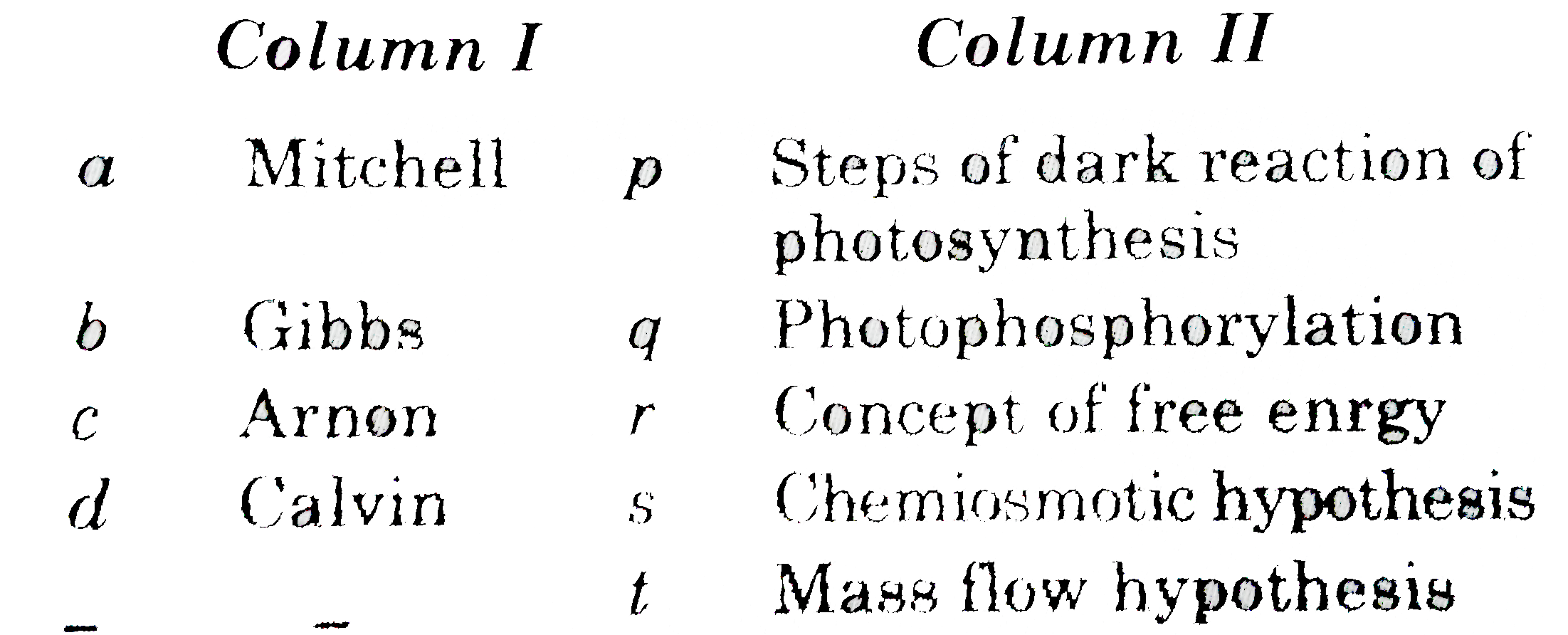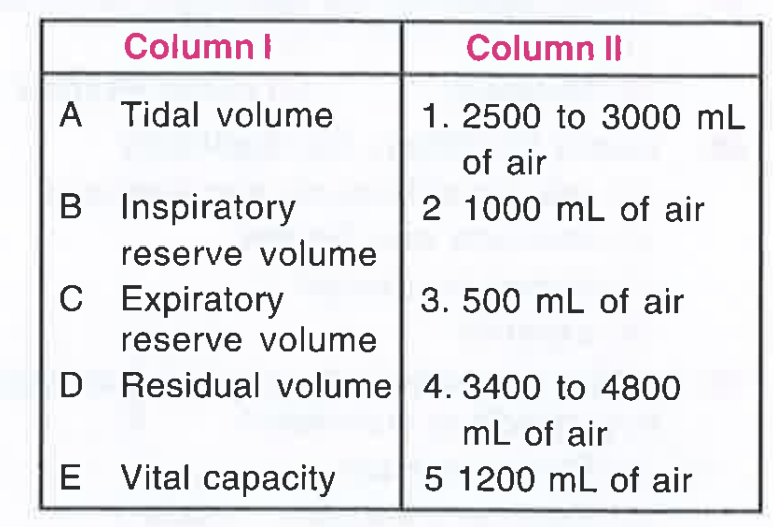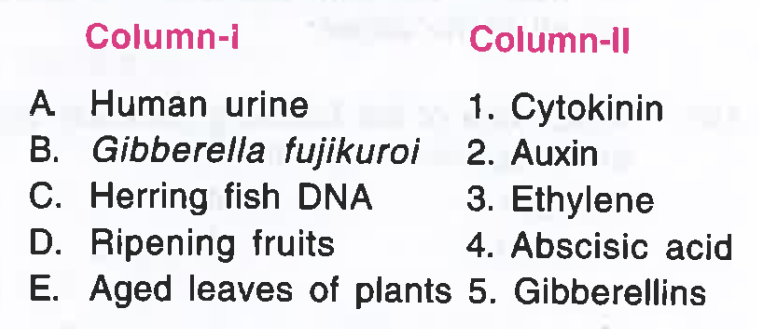Match the items in column I and column II and choose the correct option.
Column IColumn IIUV(i)BiomagnificatronBiodegradable organic matter(ii)EutrophicationDDT(iii)Snow blindnessPhosphates(iv)BOD
The correct match is :
A-(ii), B-(i), C-(iv), D-(iii)
A-(iii), B-(ii), C-(iv), D-(i)
A-(iii), B-(iv), C-(i), D-(ii)
A-(iii), B-(i), C-(iv), D-(ii)
The correct Answer is:C
To solve the matching question between Column I and Column II, we will analyze each item in Column I and find its corresponding match in Column II based on the explanations provided in the video transcript.
1. Identify UV in Column I:
- UV refers to ultraviolet rays.
- The video mentions that prolonged exposure to UV rays can cause "snow blindness," which is an inflammation of the cornea leading to burning and redness in the eyes.
- Match: UV → (iii) "Snow blindness"
2. Identify Biodegradable Organic Matter in Column I:
- Biodegradable organic matter relates to the concept of Biological Oxygen Demand (BOD).
- BOD measures the oxygen required by aerobic bacteria for the decomposition of organic matter in water.
- Match: Biodegradable organic matter → (iv) "BOD"
3. Identify DDT in Column I:
- DDT is a chemical that is associated with the process of biomagnification.
- Biomagnification refers to the increasing concentration of certain pollutants, like DDT, in the tissues of organisms at each trophic level of the food chain.
- Match: DDT → (i) "Biomagnification"
4. Identify Phosphates in Column I:
- Phosphates are linked to eutrophication, which is the excessive growth of algae in water bodies due to nutrient enrichment.
- The nutrients that contribute to eutrophication include phosphates and nitrogen.
- Match: Phosphates → (ii) "Eutrophication"
Final Matches:
- UV → (iii) "Snow blindness"
- Biodegradable organic matter → (iv) "BOD"
- DDT → (i) "Biomagnification"
- Phosphates → (ii) "Eutrophication"
Summary of Matches:
- A: UV → (iii) "Snow blindness"
- B: Biodegradable organic matter → (iv) "BOD"
- C: DDT → (i) "Biomagnification"
- D: Phosphates → (ii) "Eutrophication"
Correct Option:
Based on the matches, the correct option is C.
---
- UV refers to ultraviolet rays.
- The video mentions that prolonged exposure to UV rays can cause "snow blindness," which is an inflammation of the cornea leading to burning and redness in the eyes.
- Match: UV → (iii) "Snow blindness"
- Biodegradable organic matter relates to the concept of Biological Oxygen Demand (BOD).
- BOD measures the oxygen required by aerobic bacteria for the decomposition of organic matter in water.
- Match: Biodegradable organic matter → (iv) "BOD"
- DDT is a chemical that is associated with the process of biomagnification.
- Biomagnification refers to the increasing concentration of certain pollutants, like DDT, in the tissues of organisms at each trophic level of the food chain.
- Match: DDT → (i) "Biomagnification"
- Phosphates are linked to eutrophication, which is the excessive growth of algae in water bodies due to nutrient enrichment.
- The nutrients that contribute to eutrophication include phosphates and nitrogen.
- Match: Phosphates → (ii) "Eutrophication"
- UV → (iii) "Snow blindness"
- Biodegradable organic matter → (iv) "BOD"
- DDT → (i) "Biomagnification"
- Phosphates → (ii) "Eutrophication"
- A: UV → (iii) "Snow blindness"
- B: Biodegradable organic matter → (iv) "BOD"
- C: DDT → (i) "Biomagnification"
- D: Phosphates → (ii) "Eutrophication"
Based on the matches, the correct option is C.
Topper's Solved these Questions
Similar Questions
Match the items of column I and column II
 View Solution
View SolutionMatch the items in column I with column II and choose the correct option
 View Solution
View SolutionMatch the items in column I with column II and choose the correct option
 View Solution
View SolutionMatch the items of Column I and Column II
 View Solution
View SolutionMatch the items in Columns- I with Column-II and choose the correct option.
 View Solution
View SolutionMatch the items of Column I and Column II.
 View Solution
View SolutionMatch the items of Column I and Column II.
 View Solution
View SolutionMatch the items of Column I and Column II.
 View Solution
View SolutionMatch the items of Column I and Column II.
 View Solution
View SolutionMatch the items of Column I and Column II.
 View Solution
View Solution

